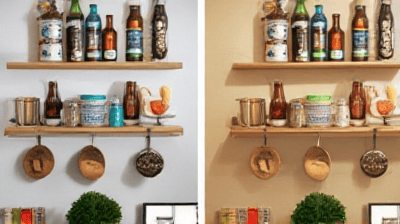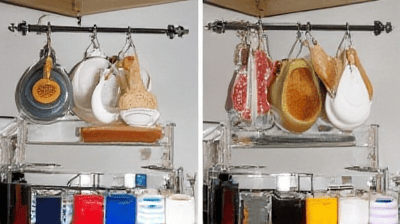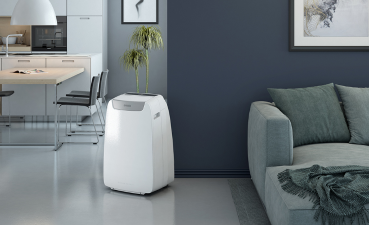A well-organized kitchen can significantly enhance your cooking experience, allowing you to navigate your space efficiently and enjoy the process of preparing meals. Whether you have a small kitchen or a spacious one, maintaining an organized environment can help reduce stress and increase productivity.

Understanding the Importance of Kitchen Organization
Before we delve into specific organizing methods, it’s crucial to understand why kitchen organization matters. A clutter-free kitchen leads to several benefits:
1. Increased Efficiency
When your kitchen is organized, you can find everything you need quickly. This efficiency makes meal preparation faster and more enjoyable, allowing you to spend less time searching for items and more time cooking.
2. Enhanced Safety
An organized kitchen reduces the risk of accidents. Keeping sharp objects, heavy items, and cleaning supplies in designated places prevents hazards and encourages safety while cooking.
3. Improved Cleanliness
Clutter can attract pests and make cleaning difficult. An organized kitchen is easier to maintain and less likely to accumulate grime and dirt.
4. Maximized Space
Creative organization techniques can help maximize your kitchen space, making the most of every nook and cranny. This is especially beneficial in small kitchens where space is limited.
5. Aesthetic Appeal
A well-organized kitchen is visually appealing. It creates a pleasant environment that you and your guests will appreciate, enhancing the overall ambiance of your home.
1. Utilize Vertical Space
One of the most effective ways to organize your kitchen is by utilizing vertical space. A kitchen has many areas that can serve as storage zones, providing opportunities to keep items off countertops and maximize efficiency.
a. Install Wall-Mounted Shelves
Wall-mounted shelves are a stylish way to display and store kitchen items. Here’s how to incorporate them into your space:
- Choose the Right Location: Consider placing shelves near the stove for easy access to frequently used ingredients or spices.
- Select Attractive Storage Bins: Use attractive baskets or bins for storing smaller items like snacks or baking supplies. This keeps items organized and adds visual appeal.
- Incorporate Decorative Elements: Add potted herbs, cookbooks, and decorative jars to the shelves to enhance aesthetics while keeping essentials within reach.
b. Hang Pots and Pans
Hanging pots and pans can free up cabinet space and create an organized, professional look.
- Use a Pot Rack: Install a pot rack above the kitchen island or countertop. Choose one that matches your kitchen decor, whether you prefer rustic wood or sleek metal.
- Hang with Hooks: Use S-hooks or clip-style hooks to hang pots and pans on the rack. This allows easy access when cooking.
- Consider Space-Efficient Options: For smaller kitchens, look for over-the-door racks or wall-mounted solutions that won’t take up valuable floor space.
c. Magnetic Strips for Utensils
Magnetic strips are an innovative way to store metal utensils and knives, keeping them visible and accessible.
- Install a Magnetic Strip: Attach a magnetic strip to the wall, close to your cooking area. This creates a dedicated spot for utensils or knives while freeing up drawer space.
- Keep Knives Safe: Place knife blocks on the magnetic strip to keep blades sharp and within easy reach while ensuring safety.
- Organize Miscellaneous Items: Use additional magnets to hang items like measuring spoons or metal spice containers.
2. Optimize Cabinet and Drawer Storage
Maximizing the organization of your cabinets and drawers is crucial for effective kitchen storage.
a. Use Drawer Dividers
Drawer dividers can keep utensils, tools, and gadgets organized, making it easier to find what you need.
- Measure Your Drawers: Before purchasing dividers, measure your kitchen drawers to ensure a proper fit.
- Choose Adjustable Dividers: Adjustable dividers allow you to customize the space according to the size and number of utensils.
- Group Similar Items Together: Organize utensils, measuring tools, and kitchen gadgets in designated sections within the drawer.
b. Implement Pull-Out Shelves
Pull-out shelves can make deep cabinets more accessible, helping you reach items in the back easily.
- Install Roll-Out Shelves: Consider upgrading existing cabinets with roll-out shelves, which allow you to easily access pots, pans, and small appliances.
- Utilize Bottom Cabinets: If you have bottom cabinets that are hard to reach, install pull-out drawers to transform them into functional storage spaces.
c. Stackable Storage Containers
Investing in stackable storage containers can help make the most of vertical space in cabinets.
- Choose Airtight Containers: Use airtight containers for grains, flours, and snacks. This helps keep items fresh and organized while maximizing space.
- Label Containers: Label each container for easy identification, making it easier to grab what you need while cooking.

3. Create a Functional Pantry
A well-organized pantry can simplify meal preparation and help you keep track of your food inventory.
a. Categorize Items
Grouping similar items together can enhance pantry organization and accessibility.
- Sort by Type: Categorize items such as canned goods, grains, snacks, and baking supplies. This allows you to find what you need quickly.
- Use Baskets: Place smaller items in baskets to keep them organized. Baskets can help prevent clutter and make it easier to grab several items at once.
b. Clear Containers for Visibility
Using clear containers can help you see what you have in stock without opening each container.
- Label Clearly: Label containers with the contents and expiration dates to avoid wasting food.
- Opt for Uniform Sizes: Use containers of similar sizes for a clean, organized look. This maximizes space and creates visual harmony.
c. Maximize Shelf Space
Utilize the vertical space in your pantry effectively with the following approaches:
- Adjustable Shelves: Consider installing adjustable shelves to accommodate items of various heights. This allows you to make use of every inch of your pantry.
- Tiered Shelving: Use tiered shelving units to keep cans and small jars visible and accessible. This helps avoid frustration when looking for specific items.
4. Designate Zones for Cooking and Prep
Creating designated zones for cooking and food preparation can improve workflow in the kitchen.
a. Identify Zones
Consider the different activities that occur in the kitchen and designate specific areas for each zone:
- Cooking Zone: This area should include pots, pans, utensils, and spices. Keep the items you use most frequently within arm’s reach.
- Prep Zone: Allocate space for cutting boards, knives, and mixing bowls. This zone should be near the sink and countertop for easy access.
- Cleaning Zone: Place dish soap, sponges, and towels strategically near the sink and dishwasher.
b. Use Caddies for Easy Transport
Caddies can help keep your cooking and prep areas organized and transport items easily.
- Create a Cooking Caddy: Gather frequently used cooking utensils, spices, and oils in a caddy that you can easily carry to the stove or countertop.
- Utilize a Cleaning Caddy: Keep cleaning supplies in a small caddy to streamline the cleaning process. This allows you to carry all necessary items from pantry to sink for efficient organization.
c. Optimize Counter Space
Keeping countertops clear can enhance usability in cooking and food preparation.
- Limit Small Appliances: Only leave out appliances you use daily. Store others out of sight to reduce clutter.
- Use Vertical Storage: Install shelves or use a spice rack to keep frequently used items easily accessible without taking up counter space.
5. Embrace Smart Storage Solutions
In addition to traditional organizing methods, innovative storage solutions can revolutionize your kitchen organization.
a. Pull-Out Trash and Recycling Bins
Keeping waste and recycling organized is essential for maintaining cleanliness in the kitchen.
- Choose Built-In Options: Install pull-out bins within cabinets to hide trash and recycling from view while keeping them easily accessible.
- Color-Coded Bins: Consider using color-coded bins for waste, recycling, and compost to make sorting easy for everyone in the household.
b. Under-Sink Storage Solutions
Utilizing the space under your sink can help you keep cleaning supplies organized and accessible.
- Stackable Bins: Use stackable bins or drawers to separately store cleaning products, sponges, and dish soaps beneath the sink.
- Hanging Storage: Consider installing a small over-the-door organizer for additional cleaning supplies, keeping them out of sight yet easy to reach.
c. Use Over-the-Door Organizers
Over-the-door organizers can create extra storage without taking up ground space.
- Install on Cabinet Doors: Utilize the inside of cabinet doors to store items like pot lids, cutting boards, or small packets of food.
- Use in Pantry: An over-the-door pantry organizer can hold snacks, spices, and condiments, freeing up shelf space.
Conclusion
Organizing your kitchen creatively can transform it into a functional and aesthetically pleasing space. By incorporating these five creative organizing ideas – utilizing vertical space, optimizing cabinet and drawer storage, creating a functional pantry, designating zones for cooking and prep, and embracing smart storage solutions – you can maximize efficiency and enhance your overall kitchen experience.
Remember, the key to maintaining an organized kitchen is regular upkeep and a commitment to keeping items in their designated places. Whether you have a small urban kitchen or a spacious family kitchen, these strategies can be tailored to fit your specific needs and style.
Embrace the art of kitchen organization and enjoy the benefits of a beautifully arranged space that enhances your cooking, creativity, and enjoyment of your home.



